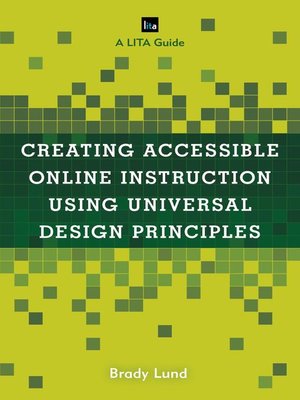Creating Accessible Online Instruction Using Universal Design Principles
ebook ∣ A LITA Guide · LITA Guides
By Brady Lund

Sign up to save your library
With an OverDrive account, you can save your favorite libraries for at-a-glance information about availability. Find out more about OverDrive accounts.
Find this title in Libby, the library reading app by OverDrive.



Search for a digital library with this title
Title found at these libraries:
| Loading... |
What is accessibility? Who needs it? Often, accessibility is defined narrowly, with emphasis on physical limitations. Accessibility needs, however, come in many forms, from vision and hearing impairment, to developmental disorders like Autism, to psychiatric conditions like anxiety, depression, ADHD, and PTSD.
Unfortunately, accessibility does not come with a simple set of checkboxes. It is a philosophy and practice that embraces social, physical, and informational elements. Universal design does not come in the form of a quick and easy guide. It is a philosophy. To implement it completely requires more than just screen readers and video captions.
Creating Accessible Online Instruction Using Universal Design Principles introduces the need for accessibility in online education and library services and the framework of universal design for learning. It takes a scoping, rather than a purely technical, approach. It will help you not only o create accessible content, but with how to communicate with students in an accessible manner.
This LITA Guide covers:
The content is interspersed with practical examples and case studies.






